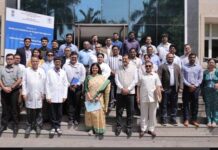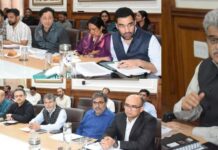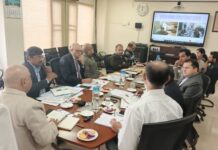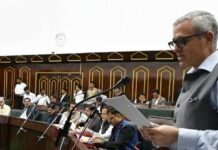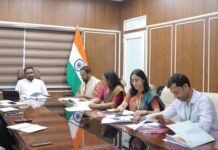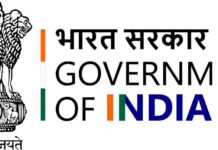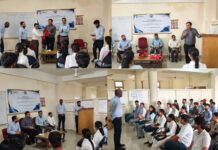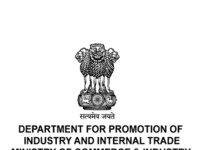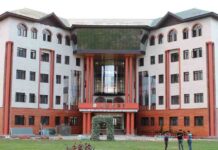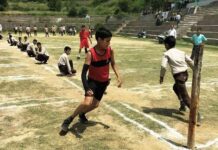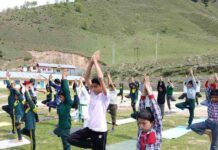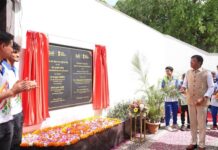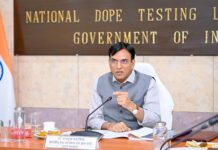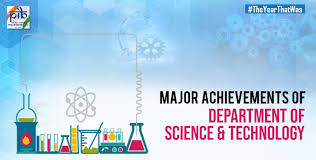: 25 DEC ,Delhi: Rounded Corners: Policy Level Impacts of DST’s Initiatives M QQajor Achievements and New Initiatives Launched during last 9 years (2014 -Dec 2022)
India’s significant rise in terms of number of publications in SCI journals – globally ranked 3rd now from 6th in 2013
India occupies 3rd rank in terms of number of PhDs awarded in Science and Engineering (S&E) (nearly 25,000) after the USA and China.
India ranks 3rd globally in terms of number of Startups (77,000) and in terms of no of UNICORNs (107) in the world.
India created a massive jump in its global ranking of Global Innovation Index (GII) from 81st in the year 2015 to 40th in 2022 among 130 economies of the world. India ranks 2nd among 34 lower middle-income economies and 1st among 10 Central and Southern Asian economies in terms of GII.
India ranks third among the most attractive investment destinations for technology transactions in the world.
The Gross Expenditure on R&D (GERD) has increased more than three times in the last 10 years.
Women’s participation in extramural R&D has also doubled in the last 9 years.
India is ranked 9th in terms of resident patent filing
Rectangle: Rounded Corners: Programme Level Achievements
DST’s Investment into S&T system got more than doubled in last 8 years from about Rs 2900 Cr in 2014-15 to Rs 6002 Cr in 2022-23.
The National Supercomputing Mission launched during 2015 has been boosting the national high performance computing infrastructure with 4 Entry level and 15 mid-level systems with 24PF compute capacity systems deployed in various institutions across the country.
The National Mission on Interdisciplinary Cyber-Physical Systems launched at a total outlay of Rs. 3660 crores during December 2018 has been boosting technology development in cyberphysical domains like AI, robotics, IOT through research and innovation hubs. The mission has created 25 Technology Innovation Hubs (TIHs) at reputed academic institutes across the country which working towards achieving the Mission objectives. Various CPS and its associated technology verticals have been considered under NM-ICPS which include: Artificial Intelligence and Machine Learning, Data Banks & Data Services, Data Analysis, Robotics & Autonomous Systems, Cyber Security and Cyber Security for Physical Infrastructure, Computer Vision, Autonomous Navigation and Data Acquisition systems (UAV, RoV etc), Quantum Technologies etc.
Survey of India launched Pan India High-Resolution Geospatial Mapping: The Survey of India (SoI), a subordinate department under the Department of Science & Technology has embarked on a Pan-India geospatial mapping of the country at a very high resolution of 10 cm scale using most advanced technologies like drone technology. With this, India joins the select club of few nations to have Ultra High-resolution National Topographic Data as foundation data. A Large Scale Mapping on 1:500 scale of States and UTs has been completed for several states. SoI has successfully carried out drone survey of rural abadi areas of 2,00,000+ villages as part of the SVAMITVA (Survey of villages and mapping with improvised technology in village areas) for distribution of Property Cards in Abadi Areas and providing ‘Record of Rights’ to village household owners.
DST’s programmes triggered extraordinary performance of innovation ecosystem: A national programme titled NIDHI (National Initiative for Developing & Harnessing Innovations) which addresses the entire value chain of Innovations has been launched. This has made some major impacts on India’s Innovation ecosystem by nurturing 3,681 startups through a network of 153 incubators created by DST, which generated 65,864 jobs as cumulative direct employment, created a wealth of Rs 27,262 crores and generated 1,992 intellectual property.
Taking Innovation to Schools: The “Million Minds Augmenting National Aspirations and Knowledge (MANAK)” programme launched during 2018 targets to bring one million ideas from middle and high schools across the country and the selected brilliant ones are being shortlisted for showcasing at district, state and then at the National Level Exhibition & Project Competition.
Empowering Women Scientists: To address gender imbalance, a new scheme viz. KIRAN was launched and a pilot scheme VIGYAN JYOTI was tested on limited scale and duration to attract and encourage young women.
AWSAR scheme launched to encourage young scientists to write popular science articles on their research pursuits.
SERB launches several new schemes to promote Science and Technology among all masses equitably: Science and Engineering Research Board (SERB), a Statutory body under DST, initiated several schemes like “SERB-POWER (Promoting Opportunities for Women in Exploratory Research)” has been designed exclusively for women scientists to take up R&D at the highest level; SERB-VAJRA targeting to bring best of global science and scientists to India including NRIs; State University Research Excellence (SERB-SURE) to create a robust R&D ecosystem in state universities and colleges; Fund for Industrial Research Engagement (SERB-FIRE) to support research and development to solve critical problems which are relevant to industries on a public private partnership mode.
Boosting Technology Commercialization: Technology Development Board that provides financial assistance to Indian industrial concerns and other agencies, attempting development and commercial application of indigenous technology, or adapting imported technology to wider domestic applications witnessed several key success stories in the recent year.
A victorious march to combat COVID 19: Several of the Autonomous Institutions, DST programmes and Technology Development board had come out with several domestic solutions in a very short timescale to deal with different challenges arising due to the COVID 19 pandemic.
The Autonomous Institutions of DST contributing both to basic research and translational research significantly with several breakthroughs in different themes
Inter-ministerial collaboration developed –
IMPRINT (Impacting Research Innovation and Technology) in 50:50 partnership with MHRD – aims to address and provide solutions to the most relevant engineering challenges faced by our nation by translating knowledge into viable technology (product and processes) in selected technology domains.
Railway Innovation Mission with Ministry of Railway- first phase on cyber physical industry 4.0 implementation for the modern coach factory
SERB-DST partners with Intel India to launch first-of-its-kind initiative to advance deep tech-based research in India: The Indian research community will soon be able to pursue industry-relevant research opportunities in the areas of deep technologies that are novel, transformative, and can have a ground-breaking impact on a national scale. The opportunities will be offered by the first-of-its-kind research initiative called ‘Fund for Industrial Research Engagement (FIRE)’ launched by the Science and Engineering Research Board (SERB), a statutory body of Department of Science and Technology (DST), Government of India, in collaboration with Intel India on June 29, 2021
NECTAR brings saffron bowl to the Northeast, boosts technology for sustainable solutions to the NE region’s challenges: The saffron bowl of India, so far confined to parts of Kashmir, has now spread its wings to parts of the North East through the focused efforts of the North East Centre for Technology Application & Reach (NECTAR). The Northeast saw the successful cultivation of saffron for the first time in Yangang village of South Sikkim. It is now being expanded to Twang, Arunachal Pradesh and Barapani, Meghalaya
Mission Innovation programme with smart grid and off grid leadership of India
Excellent progress made in programmes on Clean Energy and Water, Nano Science and Technology, Climate Change research and outreach.
International Connects: New international S&T collaboration to connect with the best global science initiated that includes participation in Thirty Meter Telescope Project and India-Israel Industrial R&D and Technological Innovation Fund
Policy formulation in some key areas: Brought out two guidelines during the year and two major policies are in the process of finalization.


